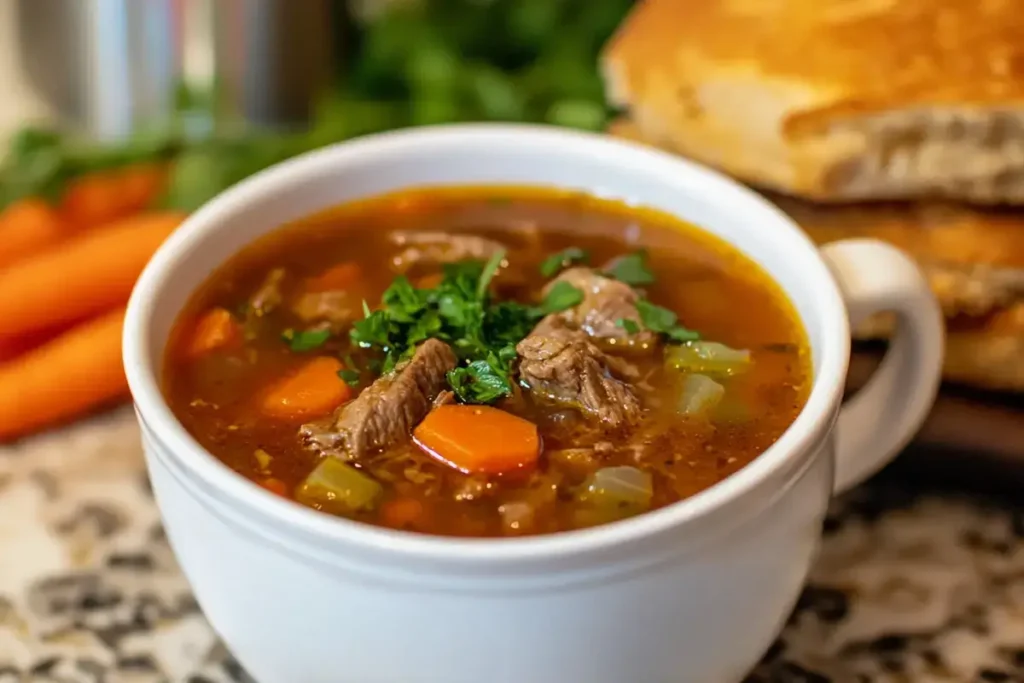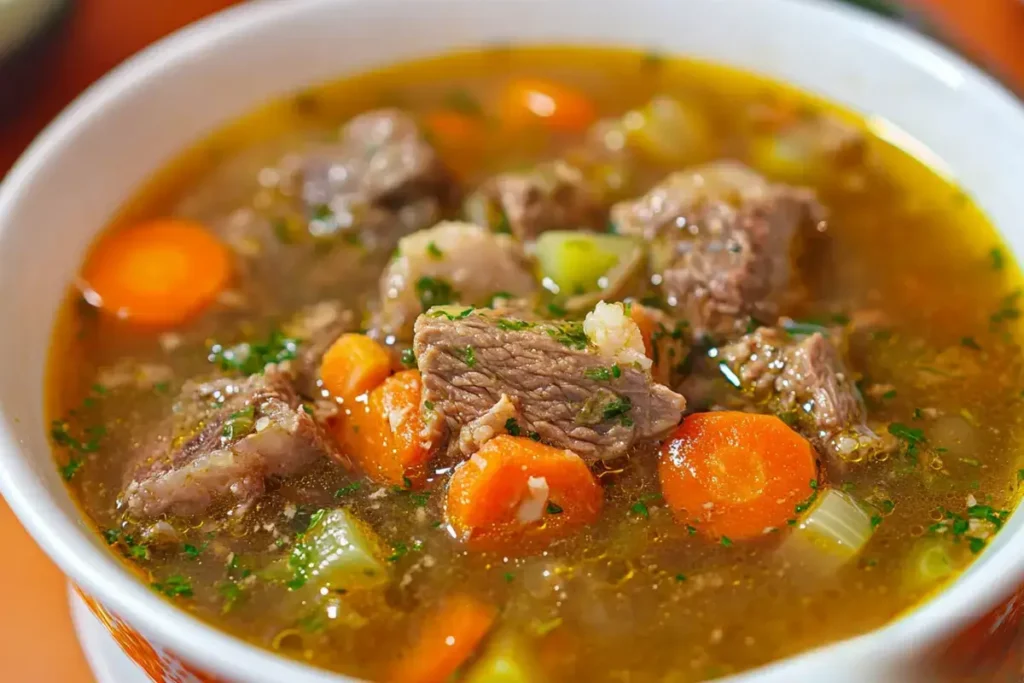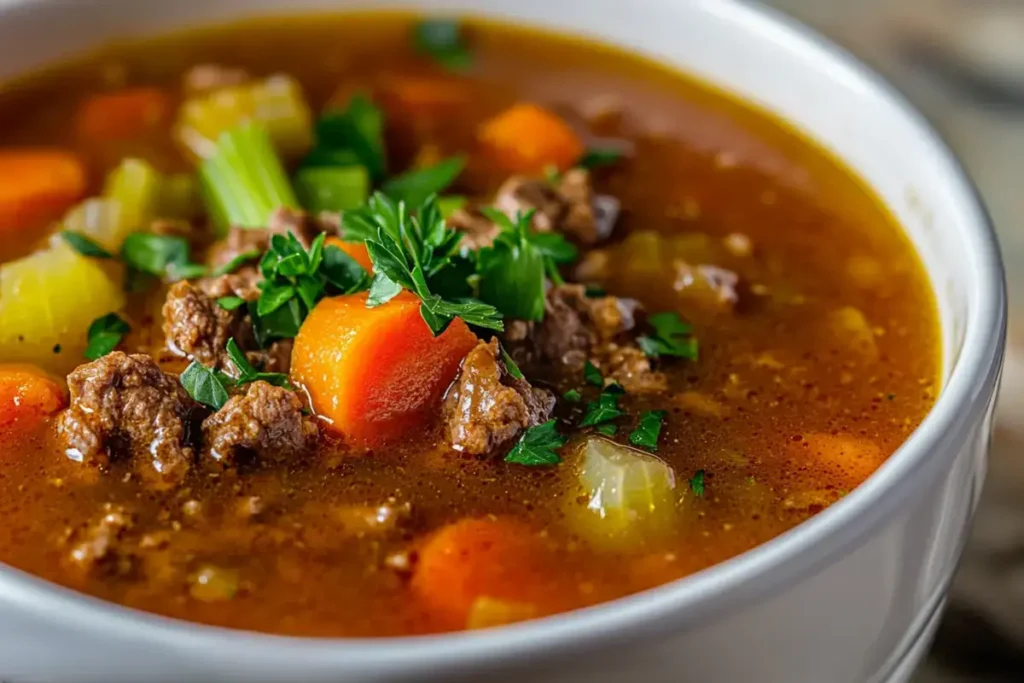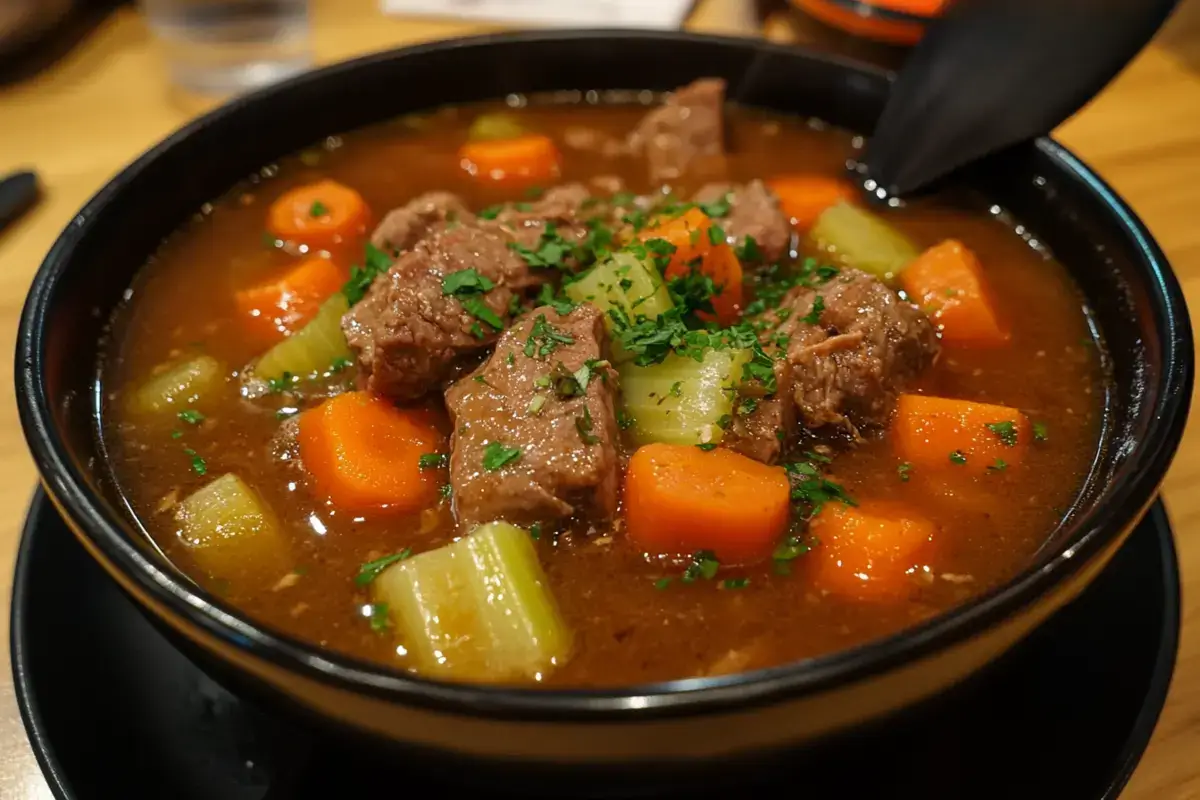Hey there, it’s Jessika from Boldy Recipes! I’ve made beef soup countless times over the years, and I know how disappointing it can be when it turns out bland or one-dimensional. The difference between mediocre beef soup and the kind that makes people ask for seconds comes down to a few key flavor-building techniques. These are the exact methods I use every time to create deeply flavorful, rich beef soup that tastes like it’s been simmering for days.
Brown the Beef Properly
This is absolutely crucial and the number one mistake I see people skip. Pat your beef cubes completely dry with paper towels, season generously with salt and pepper, then sear them in batches over medium-high heat until deeply browned on all sides.
Don’t crowd the pan overcrowding creates steam instead of browning. Those caramelized, crusty bits on the meat create hundreds of flavor compounds through the Maillard reaction. This step alone can transform your soup from bland to incredible. Take the time to do it right.

Deglaze and Capture Every Bit
After browning the beef, your pot will have brown bits (fond) stuck to the bottom. This is liquid gold. Pour in a cup of red wine, beef broth, or even beer, and scrape up every bit with a wooden spoon while the liquid simmers.
This deglazing process captures all that concentrated flavor and incorporates it into your soup. I never skip this step it adds depth you simply can’t get any other way.
Build a Proper Aromatic Base
Instead of just dumping vegetables in, I sauté onions, carrots, and celery in the beef drippings for 8-10 minutes until they’re caramelized and golden. Add minced garlic and tomato paste in the last 2 minutes, stirring constantly.
Tomato paste is my secret weapon cooking it for a couple minutes removes the raw taste and creates rich, concentrated umami flavor that makes the entire soup taste more complex.
Use Better Broth
Water makes watery soup. I always use high-quality beef broth or, even better, homemade beef stock. If using store-bought, look for brands labeled “bone broth” which have more body and gelatin.
For extra richness, I sometimes add a beef bouillon cube or a tablespoon of beef base along with the broth. This intensifies the beefy flavor significantly.
Layer in Umami Boosters
Umami is that savory, deeply satisfying flavor that makes beef soup taste rich. I add several umami-rich ingredients:
- Soy sauce or Worcestershire sauce (2 tablespoons) for savory depth
- Dried mushrooms (porcini work great) soaked and chopped
- Tomatoes (crushed or diced) for acidity and umami
- Fish sauce (1 teaspoon trust me, you won’t taste fish, just richness)
These work synergistically to create incredible depth without any single flavor dominating.

Fresh AND Dried Herbs
I use both for maximum impact. Dried herbs go in early bay leaves, thyme, and rosemary simmer with the soup for at least an hour, releasing their essential oils and infusing everything.
Fresh herbs get added at the end. A handful of chopped fresh parsley or thyme stirred in just before serving adds brightness and fresh flavor that complements the deep, rich base.
Don’t Forget Acid
This is the finishing touch that brings everything together. One to two tablespoons of red wine vinegar or balsamic vinegar added in the final minutes brightens all the flavors and makes them pop.
Without acid, flavors taste muddy. With it, suddenly everything becomes distinct and vibrant. Start with one tablespoon, taste, and adjust.
Season in Stages
I season with salt at multiple points: when browning the beef, after adding liquids, and just before serving. This layered approach builds complex seasoning rather than flat, one-dimensional saltiness.
Always taste and adjust at the end this final seasoning adjustment is critical.
Finish With Fat
Just before serving, I stir in a tablespoon of butter or drizzle of good olive oil. Fat carries flavor to your palate and gives the soup a luxurious, restaurant-quality richness.
Give It Time
If possible, let your beef soup simmer for at least 2 hours. The long, gentle cooking allows flavors to meld and develop complexity. Even better, make it a day ahead beef soup always tastes better the next day.

FAQs
Q: Can I add more beef flavor without adding more meat?
A: Yes! Use beef bouillon, beef base, or Better Than Bouillon beef flavor. Also, Worcestershire sauce and soy sauce boost meaty, savory flavor significantly.
Q: Why does my beef soup taste flat?
A: Usually from not browning the meat properly, using water instead of broth, or missing acid at the end. These three steps are game-changers.
Q: Should I add wine to beef soup?
A: Absolutely! Red wine adds acidity, depth, and complexity. Use a dry red like Cabernet or Merlot nothing you wouldn’t drink.
Q: How much difference does homemade stock really make?
A: Enormous difference. Homemade stock has gelatin and depth store-bought can’t match. But quality store-bought is still far better than water.

